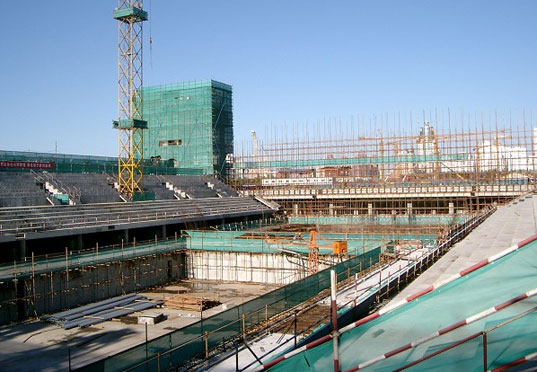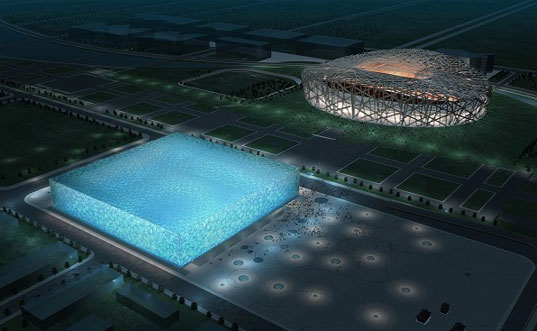via: inhabitat.com

“Our ‘Watercube’ concept is a simple and concise square form that ultimately uses the water bubble theory to create the structure and building cladding, and which makes the design so unique. It appears random and playful like a natural system, yet is mathematically very rigorous and repetitious. The transparency of water, with the mystery of the bubble system, engages those both inside and out of the structure to consider their own experiences with water,†says Andrew Frost, Director of Sydney-based design firm PTW.

With all the new construction going up in China, it’s easy to lose track of “one more cool-looking†building. But PTW’s National Swimming Center for the 2008 Olympics in Beijing exemplifies what all this new construction should aim to be: beautiful, functional, forward-thinking, and most importantly, a good example for future development in a nation whose growth appears to know no bounds. The design, which won a competition in 2003 and will sit adjacent to Herzog and DeMeuron’s main stadium, boasts a striking blue “bubble†aesthetic, which is both eye-catching and indicative of the function it houses (we love this interior-exterior architectural connection).
Known as the “Watercube,†PTW’s design is a basic box, juxtaposed with an organic “bubble†structure that makes up the building cladding. The bubbles are both organic (in form) and highly-scientific, constructed based on actual arrangement of organic cells and the natural formation of soap bubbles.
“Our ‘Watercube’ concept is a simple and concise square form that ultimately uses the water bubble theory to create the structure and building cladding, and which makes the design so unique. It appears random and playful like a natural system, yet is mathematically very rigorous and repetitious. The transparency of water, with the mystery of the bubble system, engages those both inside and out of the structure to consider their own experiences with water,†says Andrew Frost, Director of Sydney-based design firm PTW.
The skin’s material is just as innovative, its structural properties made possible by a lightweight and transparent Teflon called ETFE. The particular species of Teflon is designed to react to changing light conditions, which will create stunning visual effects for both visitors to the Watercube and to millions of TV spectators.
And if you’re wondering about the green-ness of the 7,000 square foot Watercube, PTW has brought in Arup, the highly-respected engineering firm to make the structure as efficient as possible. “Swimming centres require a lot of heating, but by cladding the building in high-tech ETFE cushions, we have developed a very efficient green house.
90% of the solar energy falling on the building is trapped within the structural zone and is used to heat the pools and the interior area,†says Kenneth Ma of Arup.
For more details on Arup’s sustainability studies, visit their website here.












{ 2 } Comments
That is intriguing. I have to commend the Chinese they always were masters of thought
i commend EurAsia for they envelope the better end of commerce in my humble opinion
{ 1 } Trackback
[…] BEIJING BUBBLE BUILDING: China’s National Swim C… […]